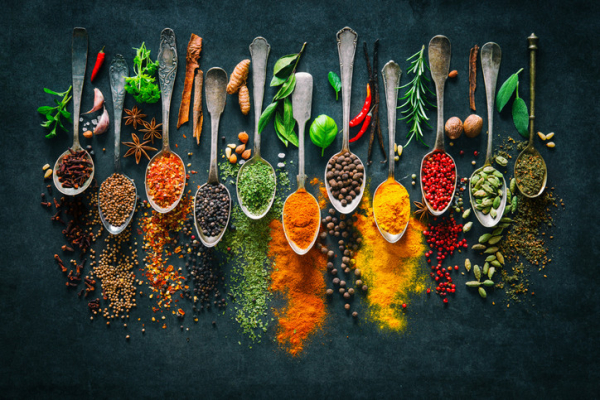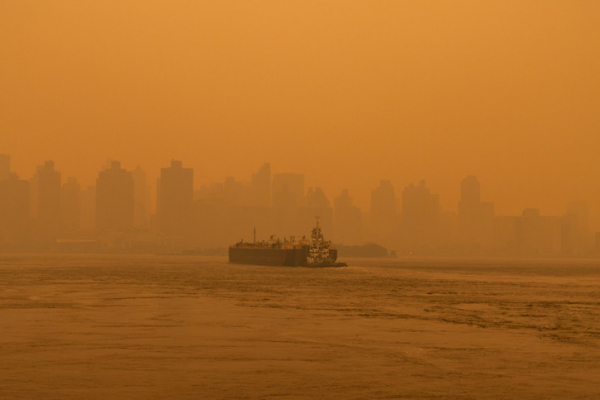
21 spices for healthy holiday foods

The holiday season is one of the hardest times of the year to resist salty, fatty, sugary foods. Who doesn’t want to enjoy the special dishes and treats that evoke memories and meaning — especially during the pandemic? Physical distancing and canceled gatherings may make you feel that indulging is a way to pull some joy out of the season.
But stay strong. While it’s okay to have an occasional bite or two of marbled roast beef, buttery mashed potatoes, or chocolate pie, gorging on them frequently can lead to weight gain, and increased blood pressure, blood sugar, and “bad” LDL cholesterol.
Instead, skip the butter, cream, sugar, and salt, and flavor your foods with herbs and spices.
The bounty of nature’s flavor-makers go beyond enticing tastes, scents, and colors. Many herbs and spices contain antioxidants, flavonoids, and other beneficial compounds that may help control blood sugar, mood, and inflammation.
Amp up holiday foods with herbs and spices
Try flavoring your foods with some of the herbs and spices in the list below. Play food chemist and experiment with combinations you haven’t tried before. The more herbs and spices you use, the greater the flavor and health rewards. And that’s a gift you can enjoy all year through.
Allspice: Use in breads, desserts, and cereals; pairs well with savory dishes, such as soups, sauces, grains, and vegetables.
Basil: Slice into salads, appetizers, and side dishes; enjoy in pesto over pasta and in sandwiches.
Cardamom: Good in breads and baked goods, and in Indian dishes, such as curry.
Cilantro: Use to season Mexican, Southwestern, Thai, and Indian foods.
Cinnamon: Stir into fruit compotes, baked desserts, and breads, as well as Middle Eastern savory dishes.
Clove: Good in baked goods and breads, but also pairs with vegetable and bean dishes.
Cumin: Accents Mexican, Indian, and Middle Eastern dishes, as well as stews and chili.
Dill weed: Include in potato dishes, salads, eggs, appetizers, and dips.
Garlic: Add to soups, pastas, marinades, dressings, grains, and vegetables.
Ginger: Great in Asian and Indian sauces, stews, and stir-fries, as well as beverages and baked goods.
Marjoram: Add to stews, soups, potatoes, beans, grains, salads, and sauces.
Mint: Flavors savory dishes, beverages, salads, marinades, and fruits.
Nutmeg: Stir into fruits, baked goods, and vegetable dishes.
Oregano: Delicious in Italian and Mediterranean dishes; it suits tomato, pasta, grain dishes, and salads.
Parsley: Enjoy in soups, pasta dishes, salads, and sauces.
Pepper (black, white, red): Seasons soups, stews, vegetable dishes, grains, pastas, beans, sauces, and salads.
Rosemary: Try it in vegetables, salads, vinaigrettes, and pasta dishes.
Sage: Enhances grains, breads, dressings, soups, and pastas.
Tarragon: Add to sauces, marinades, salads, and bean dishes.
Thyme: Excellent in soups, tomato dishes, salads, and vegetables.
Turmeric: Essential in Indian foods; pairs well with soups, beans, and vegetables.
About the Author

Heidi Godman, Executive Editor, Harvard Health Letter
Heidi Godman is the executive editor of the Harvard Health Letter. Before coming to the Health Letter, she was an award-winning television news anchor and medical reporter for 25 years. Heidi was named a journalism fellow … See Full Bio View all posts by Heidi Godman
About the Reviewer

Howard E. LeWine, MD, Chief Medical Editor, Harvard Health Publishing; Editorial Advisory Board Member, Harvard Health Publishing
Dr. Howard LeWine is a practicing internist at Brigham and Women’s Hospital in Boston, Chief Medical Editor at Harvard Health Publishing, and editor in chief of Harvard Men’s Health Watch. See Full Bio View all posts by Howard E. LeWine, MD

Wildfires: How to cope when smoke affects air quality and health

As wildfires become more frequent due to climate change and drier conditions, more of us and more of our communities are at risk for harm. Here is information to help you prepare and protect yourself and your family.
How does wildfire smoke affect air quality?
Wildfire smoke contributes greatly to poor air quality. Just like fossil fuel pollution from burning coal, oil, and gas, wildfires create hazardous gases and tiny particles of varying sizes (known as particulate matter, or PM10, PM2.5, PM0.1) that are harmful to breathe. Wildfire smoke also contains other toxins that come from burning buildings and chemical storage.
The smoke can travel to distant regions, carried by weather patterns and jet streams.
How does wildfire smoke affect our health?
The small particles in wildfire smoke are the most worrisome to our health. When we breathe them in, these particles can travel deep into the lungs and sometimes into the bloodstream.
The health effects of wildfire smoke include eye irritation, coughing, wheezing, and difficulty breathing. The smoke may also increase risk for respiratory infections like COVID-19. Other possible serious health effects include heart failure, heart attacks, and strokes.
Who needs to be especially careful?
Those most at risk from wildfire smoke include children, older adults, outdoor workers, and anyone who is pregnant or who has heart or lung conditions.
If you have a chronic health condition, talk to your doctor about how the smoke might affect you. Find out what symptoms should prompt medical attention or adjustment of your medications. This is especially important if you have lung problems or heart problems.
What can you do to prepare for wildfire emergencies?
If you live in an area threatened by wildfires, or where heat and dry conditions make them more likely to occur:
- Create an evacuation plan for your family before a wildfire occurs.
- Make sure that you have several days on hand of medications, water, and food that doesn't need to be cooked. This will help if you need to leave suddenly due to a wildfire or another natural disaster.
- Regularly check this fire and smoke map, which shows current wildfire conditions and has links to state advisories.
- Follow alerts from local officials if you are in the region of an active fire.
What steps can you take to lower health risks during poor air quality days?
These six tips can help you stay healthy during wildfire smoke advisories and at other times when air quality is poor:
- Stay aware of air quality. AirNow.gov shares real-time air quality risk category for your area accompanied by activity guidance. When recommended, stay indoors, close doors, windows, and any outdoor air intake vents.
- Consider buying an air purifier. This is also important even when there are no regional wildfires if you live in a building that is in poor condition. See my prior post for tips about pollution and air purifiers. The EPA recommends avoiding air cleaners that generate ozone, which is also a pollutant.
- Understand your HVAC system if you have one. The quality and cleanliness of your filters counts, so choose high-efficiency filters if possible, and replace these as needed. It's also important to know if your system has outdoor air intake vents.
- Avoid creating indoor pollution. That means no smoking, no vacuuming, and no burning of products like candles or incense. Avoid frying foods or using gas stoves, especially if your stove is not well ventilated.
- Make a "clean room." Choose a room with fewer doors and windows. Run an air purifier that is the appropriate size for this room, especially if you are not using central AC to keep cool.
- Minimize outdoor time and wear a mask outside. Again, ensuring that you have several days of medications and food that doesn't need to be cooked will help. If you must go outdoors, minimize time and level of activity. A well-fitted N95 or KN95 mask or P100 respirator can help keep you from breathing in small particles floating in smoky air (note: automatic PDF download).
About the Author

Wynne Armand, MD, Contributor
Dr. Wynne Armand is a physician at Massachusetts General Hospital (MGH), where she provides primary care; an assistant professor in medicine at Harvard Medical School; and associate director of the MGH Center for the Environment and … See Full Bio View all posts by Wynne Armand, MD